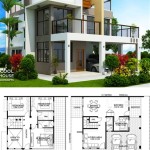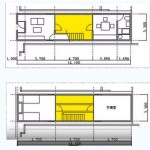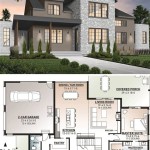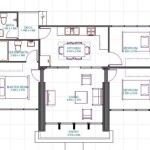Green Housing Plans: The Path to Sustainable Living
In today's eco-conscious landscape, green housing plans have emerged as a beacon of sustainability and environmental stewardship. These comprehensive plans provide a roadmap for homeowners and builders to create energy-efficient, environmentally friendly homes that minimize their impact on the planet while maximizing comfort and health.
Green housing plans encompass a holistic approach to home design and construction, considering factors such as energy efficiency, water conservation, indoor air quality, and use of sustainable materials. By integrating these principles into the planning process, homeowners can create dwellings that not only reduce their environmental footprint but also enhance their quality of life.
Essential Aspects of Green Housing Plans
To achieve a truly green home, a comprehensive plan should address the following key aspects:
- Energy Efficiency: Green homes leverage energy-efficient appliances, lighting, and building materials to minimize energy consumption. This can include installing solar panels, choosing high-efficiency HVAC systems, and utilizing passive solar design to harness natural light and heat.
- Water Conservation: Water-saving fixtures, low-flow appliances, and rainwater collection systems contribute to efficient water usage. By reducing water consumption, homeowners can not only protect water resources but also lower utility bills.
- Indoor Air Quality: Green homes prioritize indoor air quality by using non-toxic building materials, installing proper ventilation systems, and eliminating sources of pollutants such as volatile organic compounds (VOCs).
- Sustainable Materials: Environmentally friendly materials play a crucial role in green housing. These materials may include recycled or reclaimed wood, renewable bamboo, and low-carbon concrete.
Benefits of Green Housing Plans
Embracing green housing plans offers numerous advantages, both environmentally and financially:
- Environmental Sustainability: Green homes reduce greenhouse gas emissions, conserve natural resources, and minimize waste. They contribute to a healthier planet for present and future generations.
- Energy Savings: Energy-efficient features can significantly lower energy bills, providing long-term cost savings for homeowners.
- Improved Health: Green homes promote healthier indoor environments by reducing exposure to toxins and allergens. This can lead to improved respiratory health, reduced asthma risks, and enhanced overall well-being.
- Increased Property Value: Studies have shown that green homes tend to have higher resale values, making them a wise investment in the long run.
Conclusion
Green housing plans represent a transformative approach to home design and construction. By embracing principles of sustainability, homeowners can create homes that not only enhance their quality of life but also protect the environment. As the world faces pressing environmental challenges, green housing plans serve as a vital tool in building a greener, healthier future.

Disciplines Converge To Explore Sustainable Housing Planning University Of Arkansas

Pin On Architectural Presentations Drawings Models Concepts

E House Envision Prefab Inhabitat Green Design Innovation Architecture Building

35 Million Sustainable Housing Scheme Revealed

Mice Layout Another Example Of Central Green This Time With Some Houses Around The And Others Co Housing House Design Photos Tiny Village

Ysis Community Group Plans Green Affordable Housing Third Sector

Resulting Floor Plan Of A Block 16 Row Houses In Green Open Spaces Scientific Diagram

Cully Green Cohousing Communitecture Architecture Planning Design

Tyne Valley Northumberland Sustainable Housing Newton Architects Architecture And Design Northeast

Jetson Green Nine Modern Homes In Taltree Ecovillage Resort Design Plan Small House Communities Pocket Neighborhood








